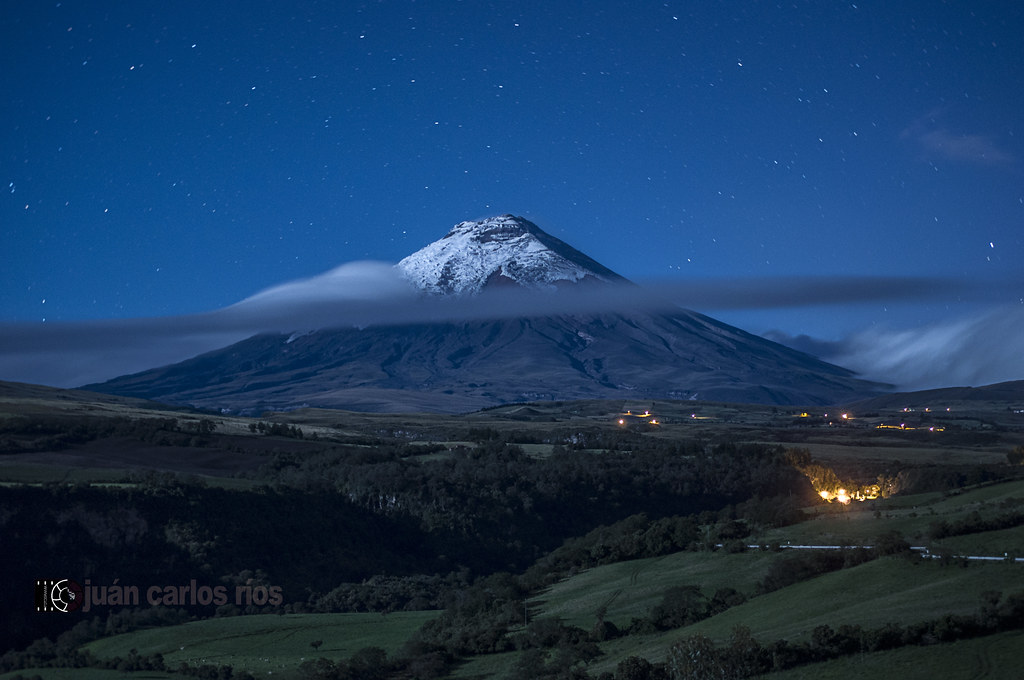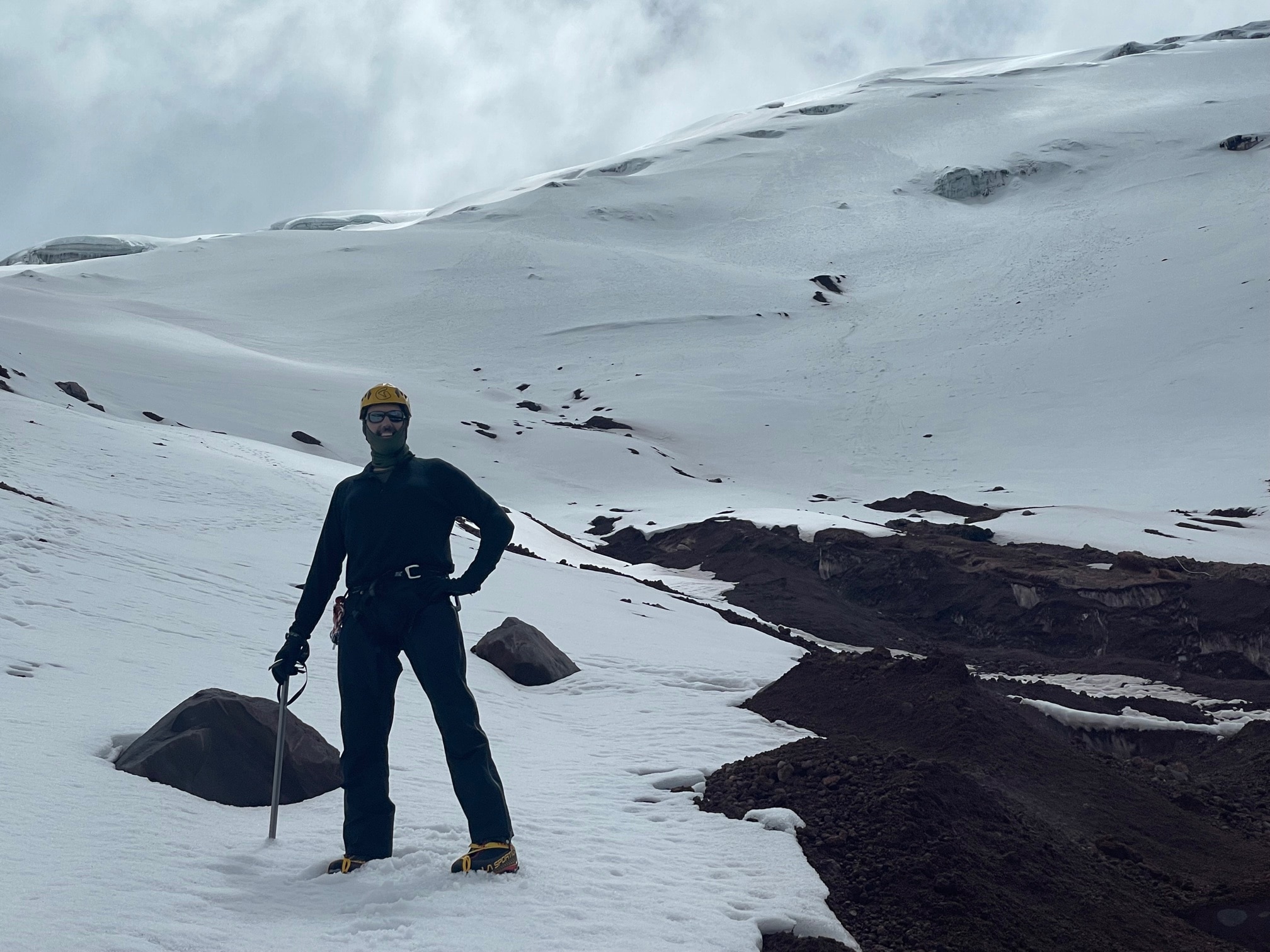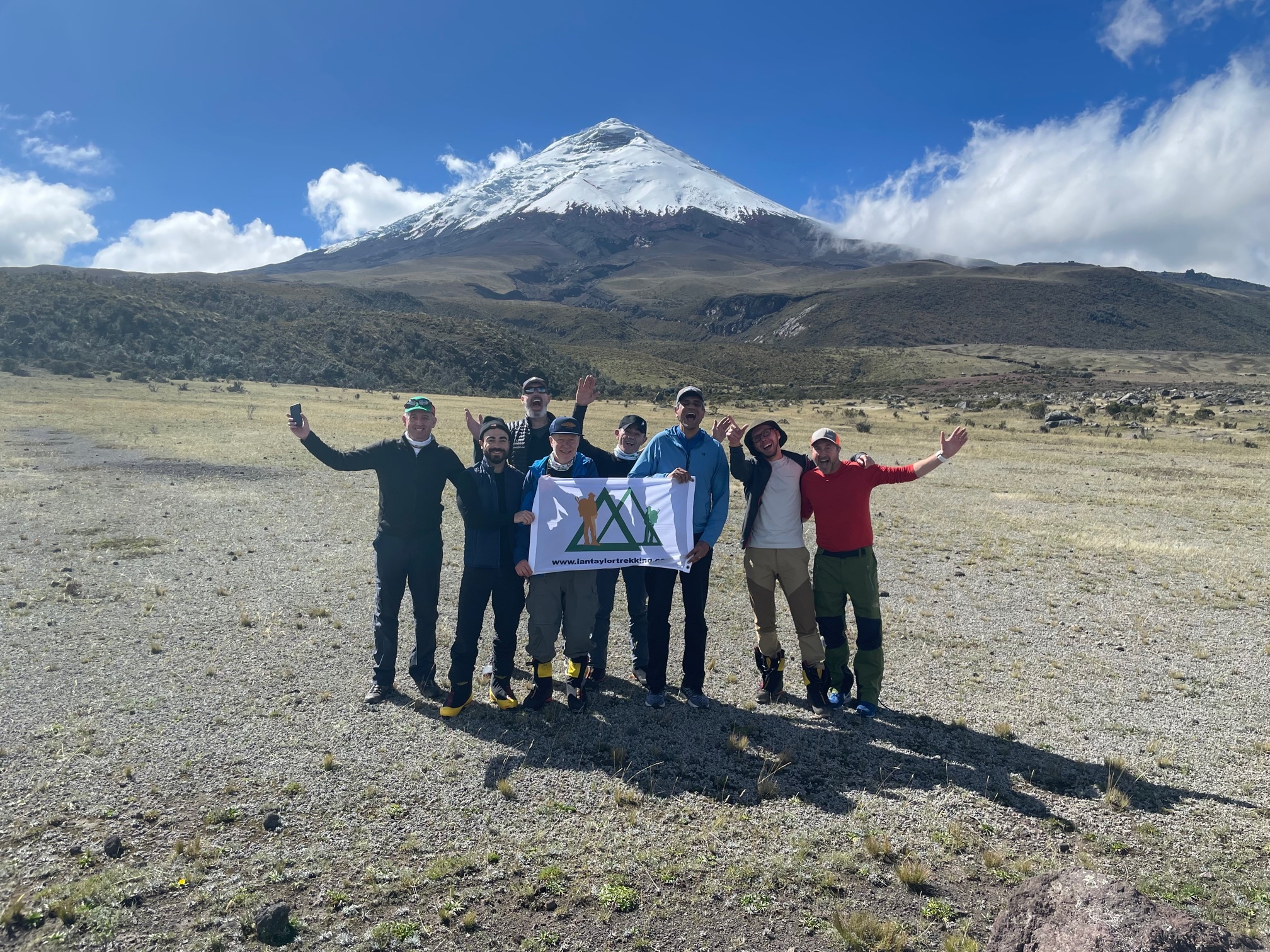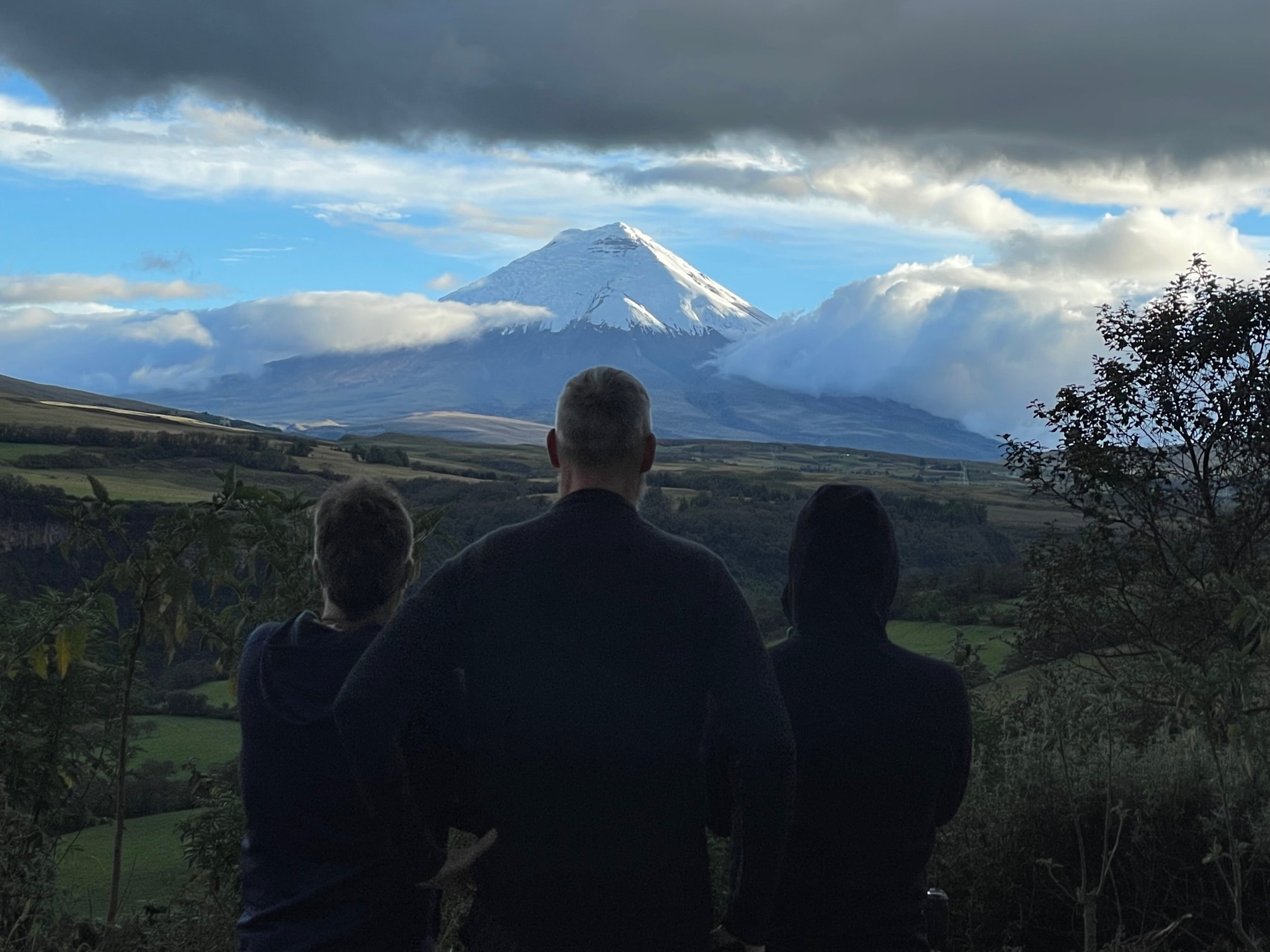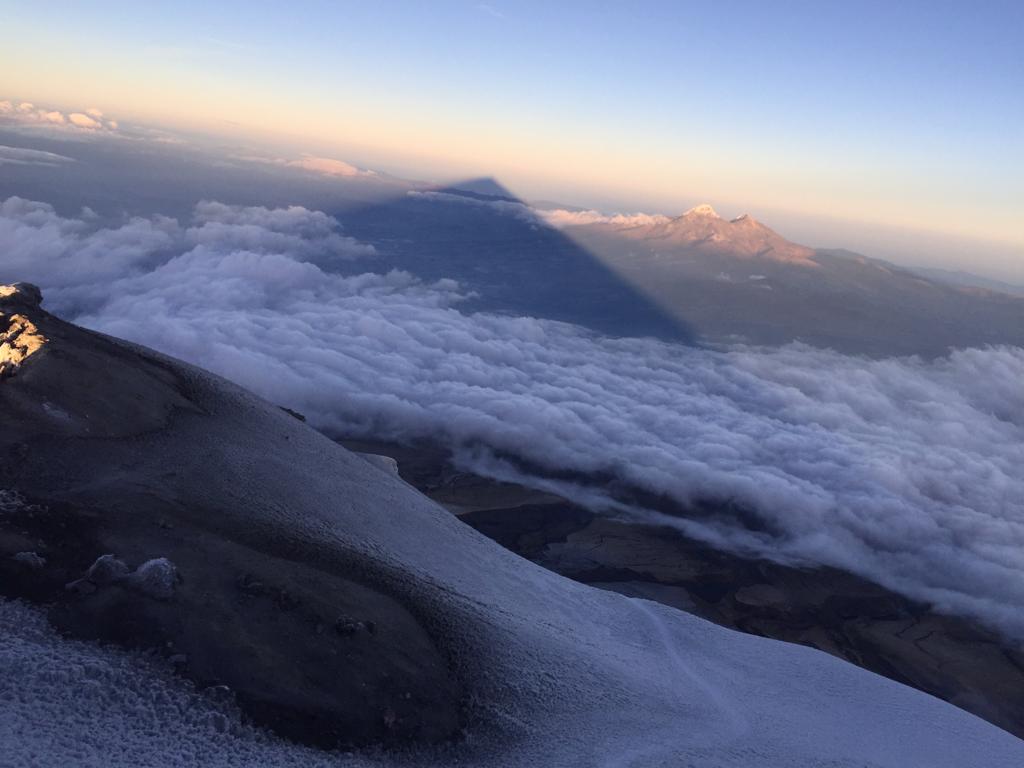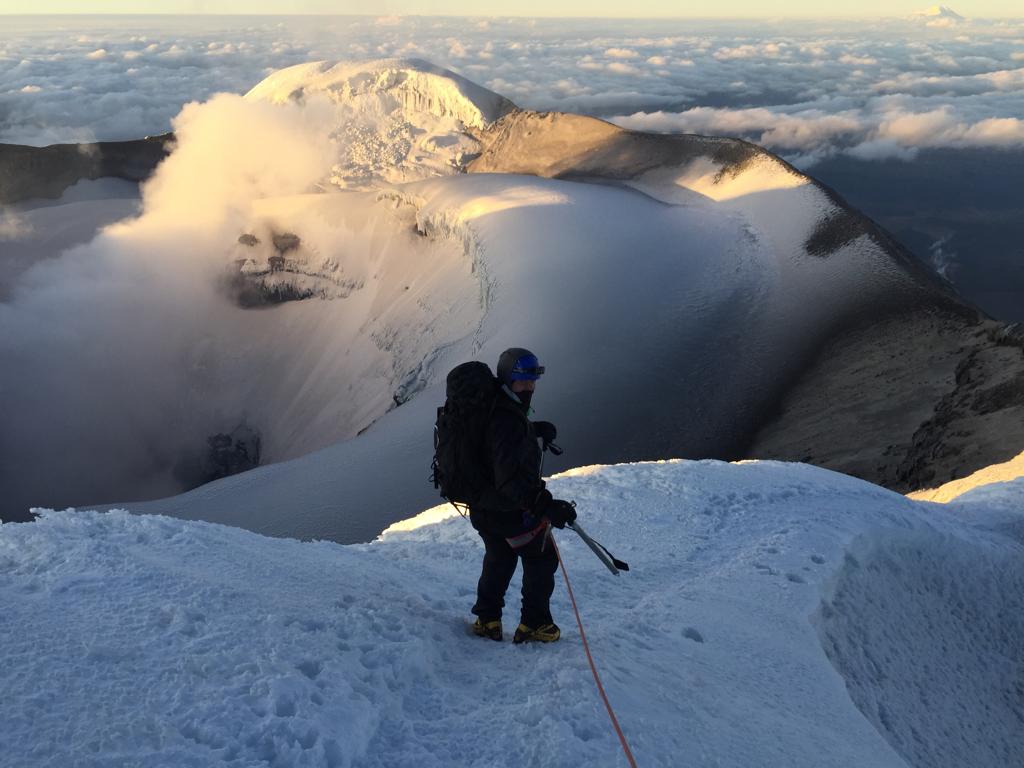Training to Climb Cotopaxi is extremely important. Depending on your hiking and glacier experience this trip maybe be easier for some people and much harder for others. The keys to success are in acclimatization along with building up to long distance hill walking 5+ hour hikes carrying weight once a week. It is important to supplement the longer hikes with daily training that focus on building strength and endurance at the correct heart rate.
Are you a Hiker?
When deciding to climb Cotopaxi, you need to consider your current ability, access to training facilities, and how much time you have to dedicate to training. All of these things will determine if you are successful on the climb. If you think running and walking on the flat with a weighted backpack are enough, you need to think again. Leg strength and endurance training are important for safety and success. If you have been on one of our Kilimanjaro trips and thinking of climbing Cotopaxi. Cotopaxi is much tougher so you need to put in the extra training needed for this more challenging trip.
Plain and simple, spend more days acclimatizing on the mountain and build up specific physical training. This will give you the best chance at safely reaching the summit and getting back down again. These are the two main reasons why people are not successful reaching the summit of Cotopaxi. We can help your understand this specific training.
The Two Main Factors
Firstly, In my opinion you need a nine day itinerary for Cotopaxi. Taking nine days will give you the best acclimatization process and the best experience possible. Climbing Cotopaxi is truly one of the great mountain experiences. So why not spend more days on the mountain to get the most out of your experience. I know it costs more, but you will come away with a much richer experience.
Secondly, you need to make sure that you are coming with the right training and preparations. We are available 5 days a week, to make sure you are getting the best information on the climb. We want to make sure that you have the tools to be safe and successful.
All of the factors below will assist you in making sure you are coming with the right information! Check out our Top 20 Tips.
Consider The Following
When you think about these elevation gains and long steep descents you need to review the daily distances, elevations gains up and down. Consider the incline on ascent and descent and think how you train for low oxygen environments. We can help you understand the key elements to this and how you can map out a training plan for climbing Cotopaxi.
Hiking up and Down Hills is the Best Training
Can you carry a 12kg/ 26lbs pack for 4 to 6 hours at sea level? Can you carry 12kg/ 26lbs pack up and down 1,000m/ 3,000 feet back to back? You do not need to carry this weight in every training session but important to build slowly over months of preparation. You also need to supplement longer hikes, training sessions with daily training focused on building strength and endurance. Learn more about training for the downhill.
Hiking With Weight
Hiking up and down hills with weight is by far the best training you can do. Try to build up from 3 hour to 8 hour hikes once a week. Taking regular and increasingly longer hikes will help develop the muscles that you need when you arrive on the side of Cotopaxi. This can not be on the flat. You need to trying to gain 500m/ 1,640 feet, building up to 1,000m/ 3,280 feet ascents and descents. However, very few people are lucky enough to have access to hills every weekend. Try to find some local hills or stairs to walk up and down if possible. Gradually increasing the duration of your walks will help to develop your stamina and also assist in preparing you for being on your feet over long distances.
When out on training hikes, ensure that you always wear the trekking boots you intend to take to Cotopaxi and try and ease your way into the Mountaineering boots. It is also good to train in the same backpack you will be taking with you on the climb. This will help you feel at ease with it and gradually add weight to the pack to build strength. Building up gradually from 6kg/ 13lbs to 12kg/ 26lbs over a 6 month period.
Talk to the Experts
Before you travel to Ecuador, we will be here to answer all of your questions. We want you to have access to the right information.
Make Sure you Have the Right Physical Conditioning
Despite being a mountain which is accessible to most people and not just experienced trekkers, you must prepare. This is important to understand! If you are used to hiking up and down hills with a weighted backpack, while covering long distances in difficult terrain, then you have less training to do. However, if you are older or not used to hiking, but consider yourself to have good overall fitness, then you will have more specific training to do. Cotopaxi is a long slog, so you need to be doing more specific training geared towards hills and stairs, building your muscle memory by carrying a weighted backpack.
Giving yourself enough time to train for a trip like this is essential. If you are only have limited training/experience with hiking, you will want to make sure you give yourself ample time to prepare. You never want to jump into the specific training right away if you do not have a good base level of fitness already. Get in touch today and we can talk through where you are and where you need to be for the climb.
Don’t Underestimate the Climb
Cotopaxi should not be underestimated. Especially the the summit night. Hiking to its summit is a serious challenge which requires significant preparation and specific physical conditioning. Leg strength and endurance training are both the key to success. With forward planning, the right acclimatization schedule and the right attitude to training, you will give yourself the best chance of success. The goal is to reach the summit, however the entire journey, up and down the mountain, is only going to be enjoyable and possible if you have put in the right preparations.
Specific Training
Climbing Cotopaxi is a physical challenge which is well within the reach of most people. However, you must be willing to do the specific training. I have climbed Cotopaxi many times and I still train 4 or 5 times a week. I also always have a weighted backpack to maintain leg strength and endurance which are both key to success. This specific training is absolutely necessary for success no matter your level of fitness. We strongly advise you to seek medical advice before starting a training program. Particularly if you have concerns about your health or are getting older.
Focusing on Summit Night
Remember the summit day is 10+ hours. From our high point at 4,800m/ 15,748 feet, you have ascend 1,097m/ 3,599 feet into extreme altitude to reach the summit. Then you also have to drop 1,097m/ 3,599 feet. This requires serious preparation.
It is important to start training as early as possible before your scheduled climb. Building strength, fitness and stamina. The best physical preparation is activity which simulates, as far as possible, the demands on your body that you will have during your climb of Cotopaxi. In my opinion there is no better way to building endurance than by walking up and down hills with a weighted backpack. Doing this while building up weight in your backpack is key to success. If you do not have access to hills you need to be using a stair master or incline treadmill to gain the required strength and endurance.
Some Additional Information
I am just back from Cotopaxi and one thing that stays the same for me, is you need as much time to acclimatize as possible. We have a 95% success on the 9 day trip. I can not emphasize how important the extra day is in terms of your safety, enjoyment and your success.
Mentally Prepare for the Climb
Being mentally prepared will also be crucial to your chance of a successful summit climb. Progressively pushing the limits of your physical training will help develop your capacity to endure the stress and strain on your body. Get used to your gear and clothing.
Having a positive attitude is also extremely important when taking on a challenge like this, so be prepared for all aspects of the trip. It is helpful to remind yourself that thousands of people have achieved this feat before you, and you can do it too. But do be prepared for setbacks and difficult stages during the climb as you try to adapt to the lack of oxygen. Remember that our guides, who are the best, will be there to encourage and inspire you every step of the way!
Multi-Day Training
Getting multi-day training or hiking prior to your Cotopaxi climb is extremely important. Training once a week in the hills is simply not enough. You will be walking for many hours at a time, on a multi-day basis. You will also need to train with your backpack. Your backpack will have two or three liters of water, spare layer, rain gear, snacks, camera, medical kit, valuables and sun cream in it each day. Being used to carry double this amount of weight at home is essential for when you are on Cotopaxi.
If you haven’t been training with double the weight you will carry on the trek, on a multi-day basis you are going to get sore legs, back and shoulders. You need to get out and train in the hills. Even better if you can do back to back days to aid in the strength/endurance training. These back to back hikes along with daily training sessions in the gym, will help to push your fitness level to where it needs to be for the climb.
Make Sure you Come Prepared
You have invested a lot of money to do this climb. You have bought all the gear, paid for the trip and bought plane tickets. There is no point in doing all of that and not putting in the efforts in your training. You have also signed up to a group climb and you need to consider the group and don’t show up unprepared. We don’t want to have to turn you around because you couldn’t find the time to train. You need to respect the mountains, the team you are going with and our team on the ground. So come prepared and make sure you find the time to train and make sure it is the correct training. We can help!
Give Yourself Enough Time to Build Specific Conditioning
It is no good trying to cram all of your training into the month before you depart. Put your training plan together months in advance, in order to build on the correct fitness, conditioning and endurance. This can take anywhere from 4 – 8 months depending on where you re starting form. Taking the right amount of time to train will also help you avoid injury.
In addition to getting out in the hills, you will need to be supplementing that training, 4 – 5 times a week, either in the gym or on stairs/hills. Remember, you will be walking up and down hills on steep and challenging terrain up to 6 hours most days and 10+ hours on the summit night. You will need to manage the distances and miles you are walking before the trip to make sure you get the specific conditioning for the climb. Make sure you have followed the base, build and peak format for your Cotopaxi training. You can reduce your training before you depart on your trek a week in advance. Get some well-earned rest and start your trip feeling fresh and well hydrated.
Nutrition
Don’t ignore nutrition. You need a well-balanced diet to maintain a good level of health. As your routine picks up and you train harder, more strain will be placed on your carbohydrate stores. Before, during and after exercise you will need to supply your body with the fuel it needs!
Going on a trip fit, strong and ready, gives you one less thing to worry about on the mountain. Feeling ready boosts your confidence, allowing you to get the most out of the experience.
Mix-up Your Training
Don’t be one dimensional in your training. Hill walking and stairs should be the bulk of your training. This will build the specific muscle memory, endurance and strength training all at the same time. When you are not feeling it, do something different. Go out an do a 10k jog, bike ride up hills, yoga, stretching and weight work. Mix up your training so you are building your core, stability and overall fitness.
The Real Key to Success
When doing your training in the right heart zone, you will be developing your endurance. Strength in the muscle is gained in the slower movement and forcing the legs to deal with the extra load. This is how you will build that strength in the muscle. That’s why stair training is important do do at a slow, controlled heart rate. Also, carrying weight in your backpack will build the strength needed.
If you are carrying a 6kg/ 13lbs backpack when on Cotopaxi, then you will need to build towards carry double that in your training. The reason for building up to carrying double the weight in your training is to stress the body at sea level. Therefore, when you take off the weight at altitude, you have the specific strength and conditioning in the body. Essentially, you have to force more stress on the body at sea level to compensate for the lack of oxygen on the mountain.
When I am training I am trying to keep my heart rate in the 140 – 155 range. 80% of my workouts are in this hear rate zone. This will be different for different people. You should be testing and monitoring your optimal heart rate zones with a professional.
Training Should be Specific to Your Needs
Make Sure you Have the Right Gear
Remember it’s not bad weather we experience, it’s not having the right gear. We provide you with an itemized kit list when you sign up to our trips. That way you know exactly what you need to bring with you to be successful. If you need further information, CONTACT US and we can help you gather the right clothing and gear needed for your climb.
Climb Cotopaxi With Professionals
Getting the right training advice for your Cotopaxi climb is important. It is also important to climb with the right team. All our guides are IFMGA/ AMGA certified guides. Let us be a part of your Cotopaxi story and help you achieve the summit. Follow us on Instagram and GET IN TOUCH today to book your trip to Ecuador.

